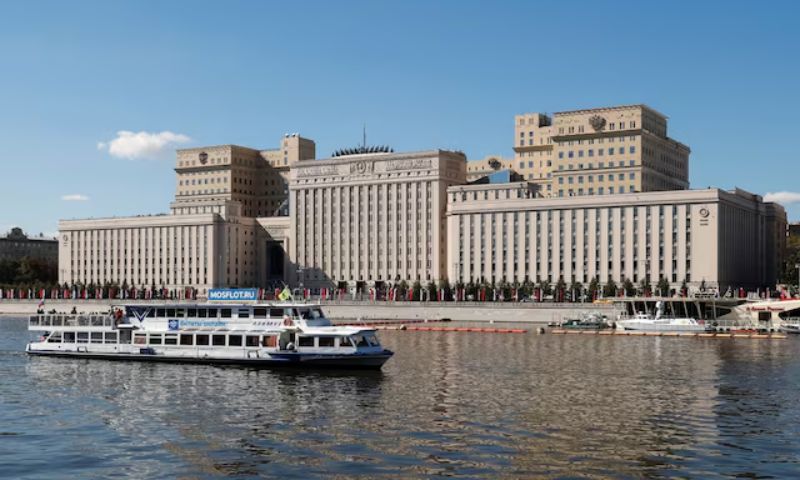Given the Hamas war in the Gaza Strip, is de-escalation with Hezbollah possible?

When leaders of terrorist organizations speak, their words must be carefully considered.
The plans for October 7 were laid out clearly and unambiguously in the tirades of Iran’s proxy leadership. Whether out of disbelief or arrogance, Israel’s defense echelon tragically left the gates to disaster open – literally – by ignoring threats from Hezbollah leader Hassan Nasrallah and other Iranian proxies such as the Yemeni Houthis. The responsibility of each agency for the resulting atrocities will be debated and investigated for decades to come.
Now, after eight of the bloodiest months in history, the enemies have drawn a clear line by making a ceasefire in Gaza a condition for virtually any possible stability in the region. Ask almost anyone in Kiryat Shmona, within firing range of the Lebanese border, if they feel safe enough to return to the homes they abandoned after October 7.
Israel has strategically reshaped its message. The phrase “remove Hamas” is key to understanding Israel’s stance on a ceasefire, and rumors point to possible Palestinian Authority involvement in ending the war in Gaza. The trial balloons and cracks in the end-of-war message may also indicate diplomatic channels are putting pressure on Israel to end the war.
Sheikh Naim Qassem, deputy leader of Hezbollah, reiterated in an interview with the Associated Press: “If there is a ceasefire in Gaza, we will stop without discussion.” Lebanese Foreign Minister Abdullah Bou Habib sent a message to Israeli Foreign Minister Israel Katz through Azerbaijani Foreign Minister Jeyhun Bayramov, saying Lebanon does not want war. Katz replied: “We must return our residents to their homes. If this cannot be done through a diplomatic solution, it will be done through war.”
Enter the reconcilers. Traditional allies like the Europeans are persuading and threatening the Jewish state to heed the call for calm, and America is enlisting the help of new friends in the region like the United Arab Emirates – a vitally important relationship – who are raising their voices and pledging support for Gaza after the war. All of this points to relentless international pressure to end the war.
In addition to the plan, Hamas is demanding the withdrawal of all Israeli forces. The agreement would effectively tie Israel’s hands and prepare it for a future October 7. Even if a tenth of Hamas’ infrastructure is preserved and its leadership continues to rule Gaza, Israel’s future looks uncertain.
The recent fighting in Gaza is consistent with US goals of preventing a regional war and confronting Iran directly. The tactical operation could serve as a barometer of whether Israel will launch a larger war with Hezbollah.
The Iran-backed proxy organization has made clear in its message that its goal is to end the fighting in Gaza. It does not appear that Tehran is seeking an escalation of hostilities with Israel, despite the number of rockets it has fired at the Jewish state’s northern borders since October 8.
However, the Iranian mission to the United Nations warned Israel in an article on Platform X (formerly known as Twitter) on June 28 that a full-scale attack on Hezbollah in Lebanon would lead to “a devastating war.”
Iran uses its strength and that of its proxies to showcase its military capabilities in the region and to exert pressure as it sees fit.
These exercises were partly a dress rehearsal (or dry run) to demonstrate their capabilities to the world in a sophisticated way, and partly a litmus test of understanding Israel and the international community’s reactions at the military and diplomatic levels.
Disagreements over the strategy for ending the war
An internal disagreement over the strategy to end the war has pitted Defense Minister Yoav Gallant against Prime Minister Benjamin Netanyahu. The former, a key US interlocutor, has tried to calm the situation, fearing a wider conflagration and seeing the need for a strategy to end the war.
He said at the weekend that a diplomatic solution was preferable to war and that Israel was not seeking war with Hezbollah. However, if the Iran-backed armed group decided to escalate the situation, Israel would “know what to do.”
Netanyahu designed the war, which Israel launched in response to the October 7 invasion of Israel’s southern border, with three goals: destroying Hamas, killing its leadership and releasing the hostages forcibly held in Gaza.
According to the Israeli Chief of Staff, the first goal has almost been achieved. The military can probably complete the task of dismantling Hamas’s operational terrorist infrastructure. However, this requires that the Philadelphia Corridor is monitored and all tunnels leading from Egypt through Gaza are destroyed.
The second goal, to rid the Gaza Strip of all terrorists, seems unattainable, leaving a state of uncertainty in the war-torn region.
As for the hostages, one can hope that any deal brokered with the Iran-backed proxy will result in the release of all hostages. The fear that some hostages will remain as bargaining chips for future negotiations leaves open this chapter in this troubling war that has brought endless death and destruction, insecurity for Israel, and a shattered Gaza Strip that needs to be rebuilt.
“A complete and permanent ceasefire in Gaza” is Nasrallah’s demand. But even if an open war with Lebanon is averted, neither the 150,000 long-range missiles aimed at Israel nor the Houthis’ tricks and drones will be able to stop a ceasefire or a diplomatic solution.
For the 80,000 civilians who have not been able to return to their homes since October, a ceasefire will bring neither peace of mind nor a return home.
The clock is ticking and open war is looming. Every word and every second counts. Time is running out for a diplomatic solution.
The author is president and CEO of The Media Line news agency and founder of the Press and Policy Student Program, the Mideast Press Club and the Women’s Empowerment Program. She can be reached at [email protected]



